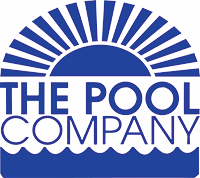This summer, get a customized pool care program.
 Salt, non-chlorine, or traditional chlorine pool?
Salt, non-chlorine, or traditional chlorine pool?
Top of the line Mineral Springs makes saline chlorination easy as can be by combining salt, borates, scale inhibitors, water clarifiers, and stabilizer into one easy to add product. Salt systems can use SaltScapes to keep their pool in top shape.
Chlorine and non-chlorine pools are easy to take care of in three steps designed to leave you with clean and healthy water, without any guesswork.
Tell us about your pool and how it’s used and we’ll create a custom plan for you. Contact us today.
Bring us a pint of your pool water and we’ll tell you exactly what you need to do to get it or keep it healthy and clean.
- Use a water sample bottle, clean water bottle, or clean zipped plastic bag. Sorry, that old cola bottle or oyster jar just won’t do.
- Get water sample from an area of the pool or spa away from skimmers and returns.
- Place the container opening-down to about elbow depth, turn the container over to fill it with water all the way to the top, then bring it out of the water and cap it.
- Bring your sample in as soon as you can. Chlorine levels might be affected by water that sits too long.
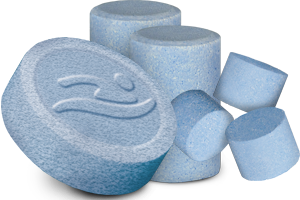
1. Sanitizer Gives You Clean, Healthy Water
This 1st step in the BioGuard 3-Step systems delivers:
- Conditioned water that is soft, clean and smooth.
- Controlled algae and bacterial growth.
- Scaling prevention.
- Protection of pool equipment against corrosion.
- Replenishing of stabilizer lost through splashing and backwashing.
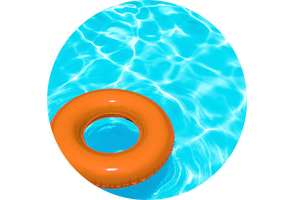
2. Oxidizers for Crystal Clear Water.
Chlorine-free? BioGuard has a fast-acting, chlorine-free alternative shock treatment.
This 2nd step in the BioGuard 3-Step systems delivers:
- Removes organic contaminants that don’t belong in the pool – suntan lotions, pet dander, and more.
- Enhances water clarity.
- Removes irritating combined chlorine.
- Allows your sanitizers to effectively do their job by eliminating waste.
Shock treatments vary by product as well the size and materials that make up your pool. Contact us to find out which shock treatment is best for you.
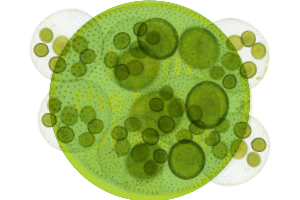
3. Algaecides, because Green Isn't Always Good
Prevent algae by using Optimizer Plus, Algae All 60, or Back-Up. Along with steps 1 and 2, Back-Up and Algae All 60 prevent algae. Recurring problems with algae? Optimizer Plus is a borate product that makes your pool water soft, sparkling, and clear while creating a hostile environment to algae. Bottom line, algae has a tough time growing an a borate solution. Upgrade your pool to Optimizer Plus.
Black, green, or mustard algae may require different treatments to ensure they are eliminated.
Our experts are ready to advise you on which algaecide would work best for your pool or spa – contact us today.
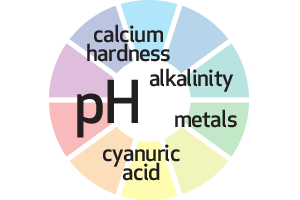
The ideal pH range is 7.4-7.6.
Control scale, metallic stains, and pH with one of these BioGuard balancers:
- Balance PAK® 100
- Balance PAK® 200
- Balance PAK® 300
- Lo ’N Slo®
- Stabilizer 100
- Pool Magnet® Plus
- Scale Inhibitor
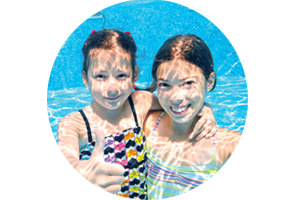
Help your filter work more efficiently!
Keep the water crystal clear and sparkling with one of these BioGuard enhancers:
- Pool Complete™
- Polysheen® Blue
- Natural Clarifier
- Pool Tonic™
- Power Floc™
- Sparkle Up®
- Smart Shield™
- Skim Mor®
- Natural Result™
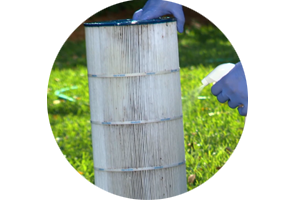
Reduce your maintenance costs and increase your equipment lifetime.
- Kleen It®
- Strip-Kwik®
- Off The Wall®
- Erase® Iron Stain Remover®
- Anti Foam
- Stow-Away®
- Chem-Out®
Opening Your Pool
1. Remove pool cover (skip this step for new pools)
Drain off any accumulated water on the cover away from your pool. Once removed, clean with BioGuard Stow-Away®to prevent sticking and odors. Store in a dry place, free of debris and protected from the sun and weather.
2. Fill your pool
Your pool should be filled to the middle of the skimmer opening to allow for proper circulation.
3. Check your pump, skimmer basket and filter
4. Get your water tested
Be sure to circulate pool water 24 to 48 hours before taking a water sample. Use a clean plastic container, provided by your BioGuard Dealer, to scoop from elbow-depth (away from skimmers and returns) about one quart of water. Seal the container and take it to your BioGuard Dealer for testing and analysis.
BioGuard pioneered the idea of computerized water analysis. Over the past 25 years, we have used our resources to research, develop and refine the science of water analysis. Today ALEX, our computerized water analysis system, provides accurate results almost instantly. You will receive personalized instructions for starting your pool with step-by-step instructions.
5. Test sanitizer and pH
You can test sanitizer and pH yourself using the BioGuard 1200V Test Kit or BioGuard Test Strips to check free chlorine, total bromine residuals and pH levels and Total Alkalinity. Use the following chart to determine proper levels.
Free Chlorine residual: 1.0 to 4.0 ppm
Total Bromine residual: 1.0 to 4.0 ppm
pH: 7.4 to 7.6 is ideal range (7.2-7.6 is acceptable)
Total Alkalinity: 125 to 150 ppm (or 80 to 150 ppm for saltwater pools)
Calcium Hardness (plaster and SoftSwim® pools): 200 to 275 ppm
Calcium Hardness (all other types): 175 to 225 ppm
6. Routine maintenance
Routine maintenance is the best way to maintain your pool. And with BioGuard’s easy-to-use 3-Step and Once-A-Week 3-Step pool care programs, it’s as easy as 1-2-3! We even have a non-chlorine system, SoftSwim®, and salt-based systems including Mineral Springs® and SaltScapes®. We have you covered!
Five Keys to Pool Care
Keep in mind . . .
Each key is important for proper pool care. Consider each key as a simple, preventative maintenance step. Pool care can be simple when you have a plan for routine maintenance and use the right products.
Circulation

Pool water must be circulated to maximize your sanitizer’s effectiveness. The more the water is in motion, the harder it is for bacteria and algae to grow and take hold. Debris is also pushed out and captured by your filter during circulation. The best time to circulate the water is during the day for about 12 hours or more.
Filtration

Your filter is one of your most important pieces of equipment! It should be backwashed (cleaning by the removal of material trapped on or in the filter media) when the water pressure in the filter reaches 8 to 10 psi above normal. Make sure to check your manufacturer’s guidelines. Filters also need to be chemically cleaned to remove the oil and debris that backwashing doesn’t catch. Check with your BioGuard Dealer to establish a maintenance schedule.
Cleaning

Your filter doesn’t catch everything; some pools have areas with little to no circulation and this is where problems occur. Brush and vacuum your wall and floors at least once a week to catch the debris that your filter misses.
Testing

Every pool has characteristics that need to be regularly measured and adjusted. Your pH and sanitizer levels are the most important factors to check. Test your water two to three times per week with heavy to typical usage. Additionally, take your water to your BioGuard dealer at pool opening, closing and every four to six weeks during the season. This will keep your pool in check.
Chemistry

The last key in pool care is applying the right products at the right time. Follow the steps provided by your BioGuard Dealer to have welcoming, brilliant and sparkling water; swimmers protected from disease transmission; and protected pool equipment and surfaces by having properly balanced water.
Closing Your Pool
Closing your pool
Winterizing is the most important thing you can do to make your spring pool opening as easy as possible. There are enormous benefits to correctly closing your pool, including:
- Protecting your pool surfaces and equipment; protecting your investments
- Keeping water looking its best all winter long
- Protecting equipment from freeze damage
- Saving time and money on extra maintenance when you open your pool
Whether you completely cover your pool or just reduce maintenance, BioGuard® can make winterizing painless. Convenient Arctic Blue® Winter Kits include the products you need for cold weather care.
Vacation preparation
While on vacation, debris and bacteria can collect in your pool and upset the water balance. Consider a “vacation plan” to prevent problems so you can come home to a clear pool and not a messy surprise.
- Contact your BioGuard Dealer for a vacation maintenance plan. (Your dealer can give you instructions based on your specific BioGuard Program.)
- Clean your pool thoroughly, brushing and vacuuming walls and floors.
- Test pool water and make sure it’s properly balanced. Anything that’s out of balance, especially total alkalinity or pH, will likely get worse when left unattended.
- Run your pump at least eight hours a day to ensure adequate filtration. (Either set your timer or ask a neighbor to turn it on and off.)
- Upon returning, have your BioGuard Dealer perform a water analysis to ensure that your pool is properly balanced and ready for swimming.
How do I stop evaporation or heat loss?
Local climate and weather conditions have a significant impact on the energy efficiency of a pool. Evaporation is more noticeable in drier areas and climates with clear, cold nights often see reduced water temperatures due to exposed water surfaces. These two effects are interrelated as well since when pool water evaporates, heat is also lost from the pool to the air. Other environmental conditions such as humidity or strong winds can also contribute to the problem. The result is increased costs to constantly refill and reheat your pool.
To prevent evaporation and heat loss:
- The solution is to either physically cover your pool when not in use or to apply products that work to reduce the impact on the water surface.
- Add Smart Shield™ as needed to create a thin, invisible barrier that will reform after activity
How often should I get my water tested?
Water testing is important to achieve and maintain a safer swimmer environment. Water chemistry can be quite complex with all the different factors.
We recommend you get your water tested 24-48 hours after you open the pool and about a week before you close it. In season, once the water is balanced we recommended you bring it in once a month for a full test. You should check the basics (Total Alkalinity, pH, and Chlorine) at home at least once a week, though more often with heavy use. The amount of use and environmental factors can easily change water conditions and staying on things will prevent issues that may prove troublesome to correct if neglected.
For example, if your water is out of balance or your pH isn’t in the right range it can cause problems, such as equipment damage and swimmer discomfort. Balanced water also contributes to the effectiveness of other products so it is an important start to your water care regimen.
How do I prevent eye and skin irritation in swimmers?
Eyes and skin can become irritated after spending time in the pool for various reasons. Out of balance pool parameter, specifically pH, can cause eye and skin irritation in swimmers. A build up of contaminants in pool water can also create chloramines (a chlorine smell) and contribute to eye/skin irritation.
To adjust pH:
- Test water to determine current chemistry conditions
- Test water before adding product to ensure which factors need to be adjusted
- Add Lo ‘N Slo® if pH is high, Balance Pak® 200 if the pH is low
- Oftentimes, especially if the pH is low, the total alkalinity is also out of range. Alkalinity helps to buffer against pH drift, and is an essential component to pool care.
To remove contaminants:
- Add BurnOut® 3, Oxysheen, or Easy Shock & Swim to oxidize contaminants Bioguard Oxidizers
- Add Pool Tonic™, Natural Clarifier or Polysheen Blue® to enhance filtration
To prevent irritating conditions:
- Keep pool water balanced according to suggested parameters.
- Add Pool Complete™ to your weekly maintenance routine
- Backwash filter when necessary
- Shock pool weekly to destroy contaminants*
*such as perspiration, suntan lotions, hair sprays, body oils, urine, pet dander, and cosmetics.
What kind of algae is in my pool?
Green algae
Common “green” algae are microscopic, aquatic plant-like organisms and can be free-floating or wall clinging. Algae grows in salt or fresh water and thrives in temperatures above 85°F. In fact, it can “bloom” overnight. Algae spores constantly enter pool by rain, wind, animals, toys or swimsuits and left unchecked, can clog filters and create surface damage.
Black algae
Black algae are single-celled organisms that grow in large colonies. They contain chlorophyll like other algae, but they also contain compounds that mask the green color. It forms in cracks and crevices on pool surfaces (especially plaster finishes) and can grow somewhat protected from the surrounding environment due to the formation of a protective layer on the outside of the cell. This makes black algae more difficult to treat and it is somewhat resistant to normal chlorine levels.
Mustard algae
Mustard algae is a chlorine-resistant form of green algae that often resembles dirt or sand on bottom or sides of pool. It contains compounds that act as a defense mechanism against the oxidation efforts of sanitizers, helping it survive even in highly chlorinated conditions. This factor can even create a large chlorine demand in certain situations. Mustard algae can be brushed away very easily, but returns quickly.
5 steps to prevent algae growth:
- Maintain a sanitizer residual of 1-3ppm
- Do an initial and weekly application of a preventative algicide (such as Algae All 60)
- Shock routinely
- Make sure there is adequate circulation and filtration
- Brushing surfaces is vital
To kill algae:
- Use Banish® or Algae Complete as they kill all types of swimming pool algae
- Spot Kill® is specifically formulated to kill black algae on walls
- Spot Kill® WP should only be used on white plaster pools.
IMPORTANT NOTE: Brushing is extremely important when treating black algae because that protective layer has to be broken in order for the sanitizer or algicide to come in contact with the cells.
Why is the water cloudy?
Cloudy water is a hazy, murky appearance that is caused by introduction of suspended particles that are invisible to the naked eye. A similar analogy would be the particles in air that cause smoke. These impurities are introduced to the water from a myriad of environmental sources, even bathers and source water. Particles can intensify and cause water to cloud due to improper water balance, low sanitizer levels and/or lack of routine oxidation, poor filtration or inadequate circulation.
To fix chemical causes of cloudy water:
- Test water to determine current chemistry conditions
- Add Lo ‘N Slo® if pH is high
- Add shock to oxidize contaminants
To fix equipment causes of cloudy water:
- Improper filtration is the largest cause of cloudy water
- Use Strip Kwik ® or Kleen It ® to clean dirty filter media
- Add Pool Tonic™, Natural Clarifier or Polysheen Blue® to enhance filtration
- Check pool returns and make sure they are angled properly
To prevent cloudy water:
- Add Pool Complete™ to your weekly maintenance routine to improve clarity and reduce contaminant levels
- Backwash filter when necessary
- Chemically clean filter every 4-6 weeks
- Replace filter media as directed
- Run pump at least 10-12 hours per day
- Maintain proper water balance
- Oxidize pool weekly to destroy contaminants
- Shock pool weekly to destroy contaminants*
*such as perspiration, suntan lotions, hair sprays, body oils, urine, pet dander, and cosmetics.
Can I stop waterline build-up?
To remove waterline build-up:
- Add Pool Tonic™ to remove contaminants such as oils, lotions and grease
- Add Scale Inhibitor to gradually remove scale from pool surfaces
- Use a brush and Off The Wall® to quickly clean surfaces near the waterline
To prevent waterline build-up:
- Add Pool Complete™ to your weekly maintenance routine to help keep surfaces cleaner
- Backwash filter when necessary
